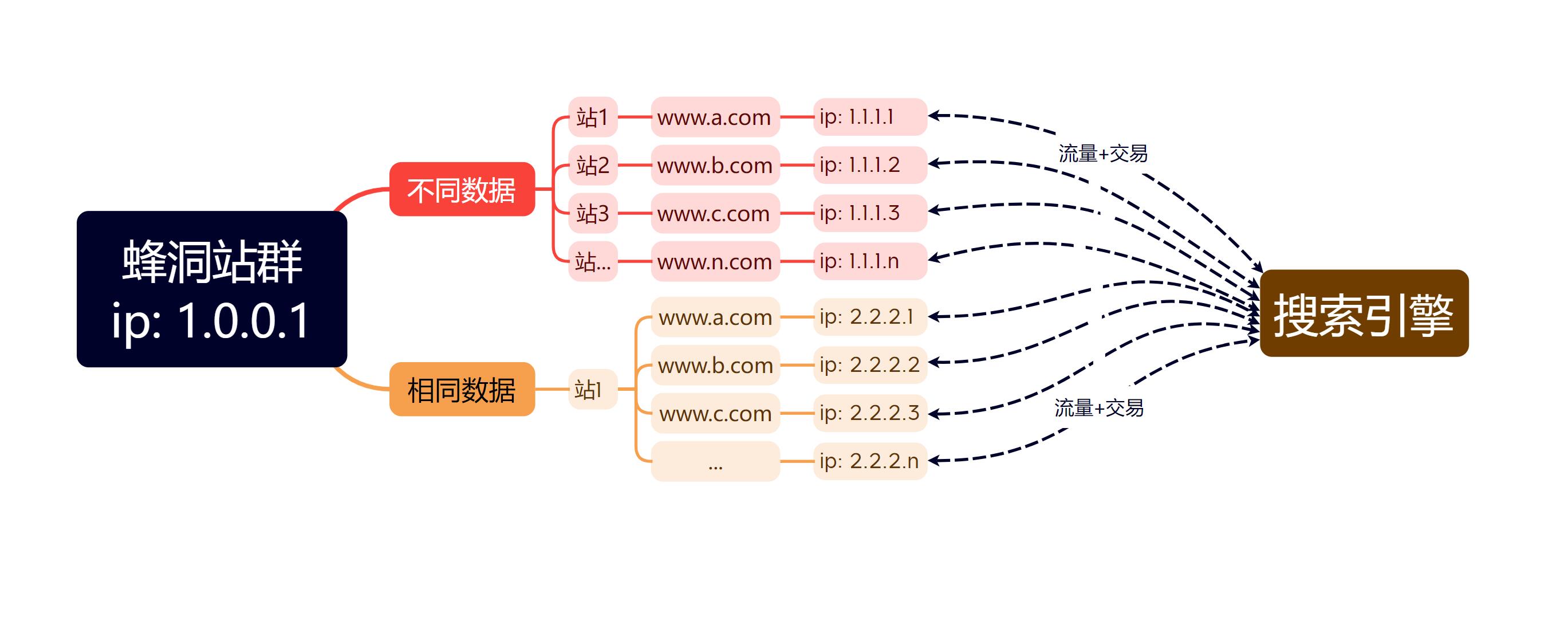The Practical Approach of Building a Website Cluster for Independent Stations
 What is a site group?
What is a site group?
A site group is a technique for duplicating a set of website data into multiple websites through technical means, or constructing multiple sets of data and multiple websites. The more websites and keywords, the more traffic can be obtained from search engines.
If you can master this skill, no matter what industry you are in, you can quickly cover the market and continuously gain traffic from search engines.
What is the key to site grouping? It is that your site grouping should not be detected as cheating by search engines.
To prevent being detected as cheating, you need to do the following three things:
Point 1: Code isolation, different HTML code. The links and image links in the HTML code should be as different as possible.
Point 2: IP isolation, multiple domain names should not share the same IP address. If multiple websites share one IP address, it is easy for search engines to recognize them as spam sites and not allocate traffic to them.
Point 3: Sufficient data, there should be enough articles corresponding to the keywords of the website, and there should also be enough corresponding products, in order to be indexed by search engines and obtain more traffic.
There are so many technical requirements for building a network of sites, so how do you implement it? Ordinary personnel should not have the ability to resolve these technical points, and if you want to quickly build your own independent site network system without any technical background, you can directly use the Beehole network of sites system. It's easy to get started and doesn't require much technical ability, you can have it done in 10 minutes.

The diagram above clearly describes the key technical points of the site network system, and the Beehole system solves these difficulties for everyone:
1. Building a site network system
Our Beehole system supports one-click deployment, just a single command is needed to complete the setup, and it only takes about 10 minutes.
2. Creating data, content is key
The content of the site network is key to search engine indexing. Without high-quality articles, there will be no traffic. Writing them yourself is too costly. Our Beehole system comes with a dedicated article collection plugin that can rewrite articles collected through AI automatically, turning them into original content, and then scheduling them for publishing to allow search engines to quickly index them. Such pseudo-original articles can help you quickly gather large numbers of articles to be indexed by search engines, dominate industry keywords, and bring free traffic.
Not only that, AI can also automatically translate into multiple languages, which is the key point for opening up overseas markets.
3. Data management of the station group is also important.
The Beehive system supports internal linking to improve search rankings, and also supports centralized management of the backend, allowing for permissions management between departments and employees, making it convenient for you to manage and scale.

The Beehive station group system has a unique architecture, supporting separate deployment of the frontend and backend.This allows for the use of a single backend to deploy multiple frontends, with the frontends deployed on any server with IP isolation to prevent search engines from detecting cheating.
For station groups with different data, multiple servers can be independently deployed for the frontend, each bound to a different domain and independent from each other.
For websites with the same data, multiple different domains can be bound, and each frontend can be independently deployed with different IPs.
These two modes can be used independently or in combination, allowing you to flexibly build a large station group system.
Once the Beehive system is deployed, all you need to do is persistently collect articles. You need to collect articles day after day, waiting for search engines to index them, waiting for traffic. As long as you keep updating the content, the site group will gradually grow and bring more and more traffic.
With this method, you don't need professional technical personnel to manage a large-scale site group.

